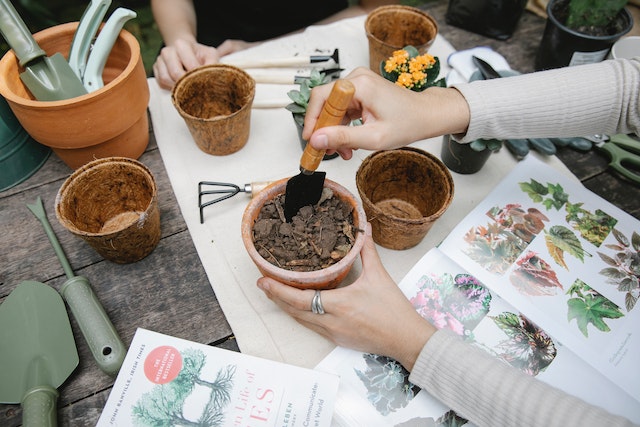The addition of lovely and invigorating water plants to your house is something you should really consider. They not only improve the visual attractiveness of a room, but they also offer a variety of positive effects on one’s health, including as cleaning the air and helping one to feel less stressed. Nevertheless, taking care of indoor water plants may be quite difficult, particularly for those who are not very experienced in the cultivation of plants. In this piece, we will go over some straightforward advice on how to properly care for water plants that are kept indoors.
Table of Contents
Make Sure You Choose the Proper Plants.

It is necessary, prior to purchasing indoor water plants, to have a solid understanding of which plants perform particularly well in indoor situations. The peace lily, spider plant, pothos, and Chinese evergreen are among the most common and well-liked varieties of houseplants that thrive in water. These plants can thrive in circumstances with a relatively modest amount of light since they do not need a lot of sunshine.
It is also crucial to have a solid understanding of the kind of water plants that you have since some types need more upkeep than others. For example, fortunate bamboo needs a lot of attention and care, and you need to maintain changing the water in its container on a regular basis.
Make Sure there is Sufficient Illumination.
Sunlight is essential for the growth and health of water plants kept indoors. Unfortunately, certain plants cannot tolerate an excessive amount of direct sunshine, which may cause the leaves to wilt or even catch fire. As a result, it is of the utmost importance to position your plants in an area that is exposed to indirect sunlight, such as a location next to a window or under a skylight. You may also make use of artificial lighting as a complement to natural light, particularly during the colder months of the year.
Make Sure the Water is Kept Clean.

The quality of the water is very essential to the well-being of indoor water plants. It is important to ensure that the water is pure and devoid of any pollutants, including chlorine, fluoride, and heavy metals. It is possible to use water from the tap, but it is essential to let the water rest for at least 24 hours to enable the chlorine to dissipate.
Altering the water’s composition on a consistent basis, ideally once every two weeks, is another crucial step. This helps to avoid the buildup of dangerous germs, such as bacteria, algae, and other creatures that might be damaging to your plants. As you change the water, be sure to thoroughly clean the roots and the container to eliminate any debris or residue that may have been left behind.
Always use the Appropriate Container.
The importance of the container you choose to utilize to house your indoor water plants cannot be overstated. The container need to be built of non-hazardous components and shouldn’t release any dangerous compounds into the liquid it contains. Containers made of glass or ceramic are preferable since they are simple to clean and do not include any potentially dangerous chemicals.
It is also very important to choose a container that is the appropriate size for the plant you have chosen. If the container is too tiny, the plant may develop a condition known as root-bound, which prevents it from growing normally. On the other side, if the container is too big, it could be able to store an excessive amount of water, which would result in the roots rotting.
Fertilize Regularly

The growth and health of indoor water plants are dependent on the presence of nutrients. It is vital to complement this with fertilizers even if they do obtain some nutrients from the water that they drink. Depending on the kind of plant you have, you may either use liquid fertilizers or slow-release fertilizers. Both methods are effective.
The frequency of fertilizer applications in the water should range from every four to six weeks, depending on the kind of fertilizer being used. Be careful to follow the directions on the container, since giving your plants an excessive amount of fertilizer might be detrimental to their health.
Prune Frequently
It is necessary to prune indoor water plants on a regular basis in order to avoid the plants from getting overgrown and to encourage healthy plant development. When you prune your plants, make sure to use shears or scissors that are well-cleaned and very sharp. It is important to remove any leaves that have died or turned yellow since they may carry germs that are detrimental to the plant and might spread to other parts of the plant.
In addition to this, it is vital to remove any plant portions that have begun to rot or decay. They have the potential to pollute the water, which will ultimately be detrimental to your plant.
Keep an Eye on the Temperature.
Changes in temperature may be stressful for houseplants that need water. They are most comfortable in temperatures ranging from 60 to 75 degrees Fahrenheit. It is imperative that you keep your indoor water plants away from drafts, such as those that are created by the vents in your heating and air conditioning system. Variations in temperature brought on by these drafts might be harmful to the plants you have.
It is also very important to keep your plants away from any sources of heat, such as heaters or direct sunshine, since this may cause the water to evaporate too rapidly, which in turn can cause damage to your plants.
Sustain Humidity Levels
Indoor water plants need surroundings with high amounts of humidity in order to grow. Either by sprinkling your plants with water every day or by utilizing a humidifier in the area, you can keep the humidity levels at a comfortable level. You may also boost the humidity in the area by placing a tray of water near your plants where they are located.
It is crucial to do regular humidity checks since excessive levels of humidity may encourage the growth of mold and mildew on your plants, which is detrimental to the health of the plants.
In conclusion, indoor water plants are a terrific addition to any house, and with a little bit of care and attention, they are capable of thriving and providing a number of health advantages to their owners. If you keep these straightforward recommendations in mind, you’ll be able to guarantee that the water plants you keep indoors will continue to thrive for many years to come.

